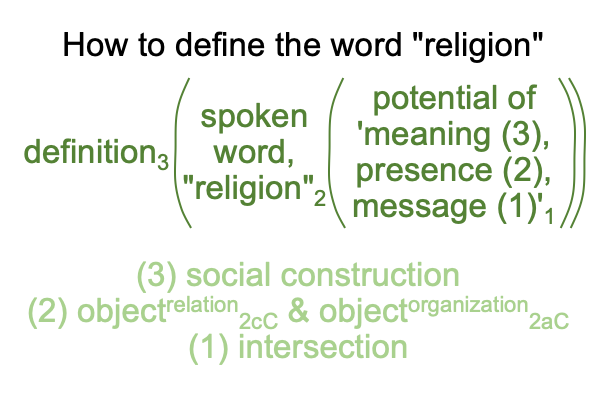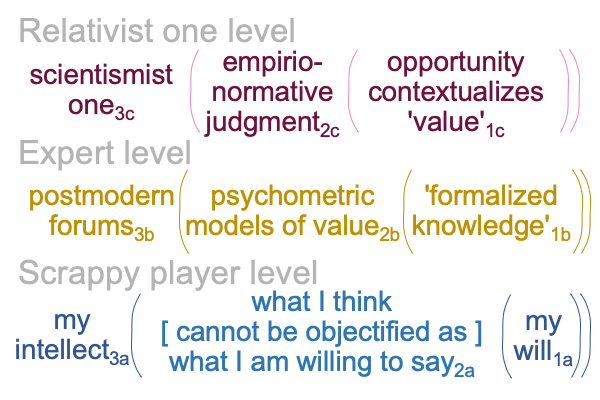0330 Chapter eleven proclaims, “Actually, wokeness is literally a religion.”
From a purely legal point of view, Ramaswamy demonstrates that wokeness is a religion. Judicial rulings may be sequenced in order to show that even a person who claims to be “not religious” may be protected by laws against discrimination on the basis of religion. So, by extension, employers should not have the privilege of firing someone who is not religious based on the employer’s religious beliefs.
After all, what does the term, “not-religious” really mean?
0331 Does “religious” label a Christian faction?
If so, then “not religious” indicates a person who does not belong to a Christian denomination.
But, can that person be “religious”?
In terms of legal precedents, the answer is “yes”.
0332 This leads me to wonder, “How does one define a spoken word?”
In 2015, Razie Mah publishes an e-book titled, How to Define the Word “Religion”. This work is available at smashwords and other e-book venues.
0333 The answer to the question comes by way of a category-based nested form.

The normal context of definition3 brings the actuality of the spoken word, “religion2“, into relation with the potentials1 of meaning (D), presence (E) and message (F).
0334 The masterwork elaborates.
0335 The meaning1 underlying the word, “religion”2 (D) is social construction. Social and sensible construction are not the same. Social construction is on display in many three-level interscopes. Sensible construction goes with two-level interscopes.
For example, consider the following three-level interscope.

0336 Psychometric models2b may be regarded as sensible constructions that virtually situate content-level actualities2a.
The empirio-normative judgement2c may be regarded as a social construction that puts sensible construction into perspective.
0337 Typically, social constructions operate in the background, while sensible constructions work in the foreground. For diversity, a list of checkboxes for readily determined traits2b may serve as an implementation of psychometric models for the value of diversity2b. In the background, an empirio-normative judgment2c stands unchallenged and invisible, leaving some scrappy players3a,1a feeling that success2c has already been decided, because the check-box routine2b does not convey the possibility of opportunity1c.
0338 Yes, the game is rigged.
One gets a feeling similar to a sinner facing the Christian doctrine of predestination.
0339 The presence1 underlying the word “religion”2 (E) consists of two objects residing in the societyC tier.
Tiers?
In order to appreciate the presence underlying the word “religion”, the inquirer must construct three tiers. Each tier is an interscope. The societyC tier brings the organizationB tier into relation with the individual in communityA tier. The two objects on the societyC tier are the perspective-level actuality, labeled the relational object2cC, and the content-level actuality, labeled the organizational object2aC.
Consequently, there are two types of religion, one suprasovereign2cC and one insfrasovereign2aC.
Imagine the interplay between these two objects, one on the perspective level and one on the content level, above and below the sovereignb level of the societyC tier.
0340 The message1 underlying the word, “religion”2 (F) is composed of two actualities, each with its own nested form, constituting a single actuality. The intersection is a purely relational structure that is full of mystery. Mystery? The contradictions within the single actuality may be delineated, but they cannot be resolved without destroying the intersection. Occasionally, intersections resolve into two-level interscopes and mystery gives way to sensible construction.
As already noted, for the scientismist one3c, psychometric models2b contain an intersection of two values, one for capitalism and one for socialism. An intersection resides at the core2b of the interscope for scientism3c.
Value2b exemplifies the message underlying the word, “religion”.
